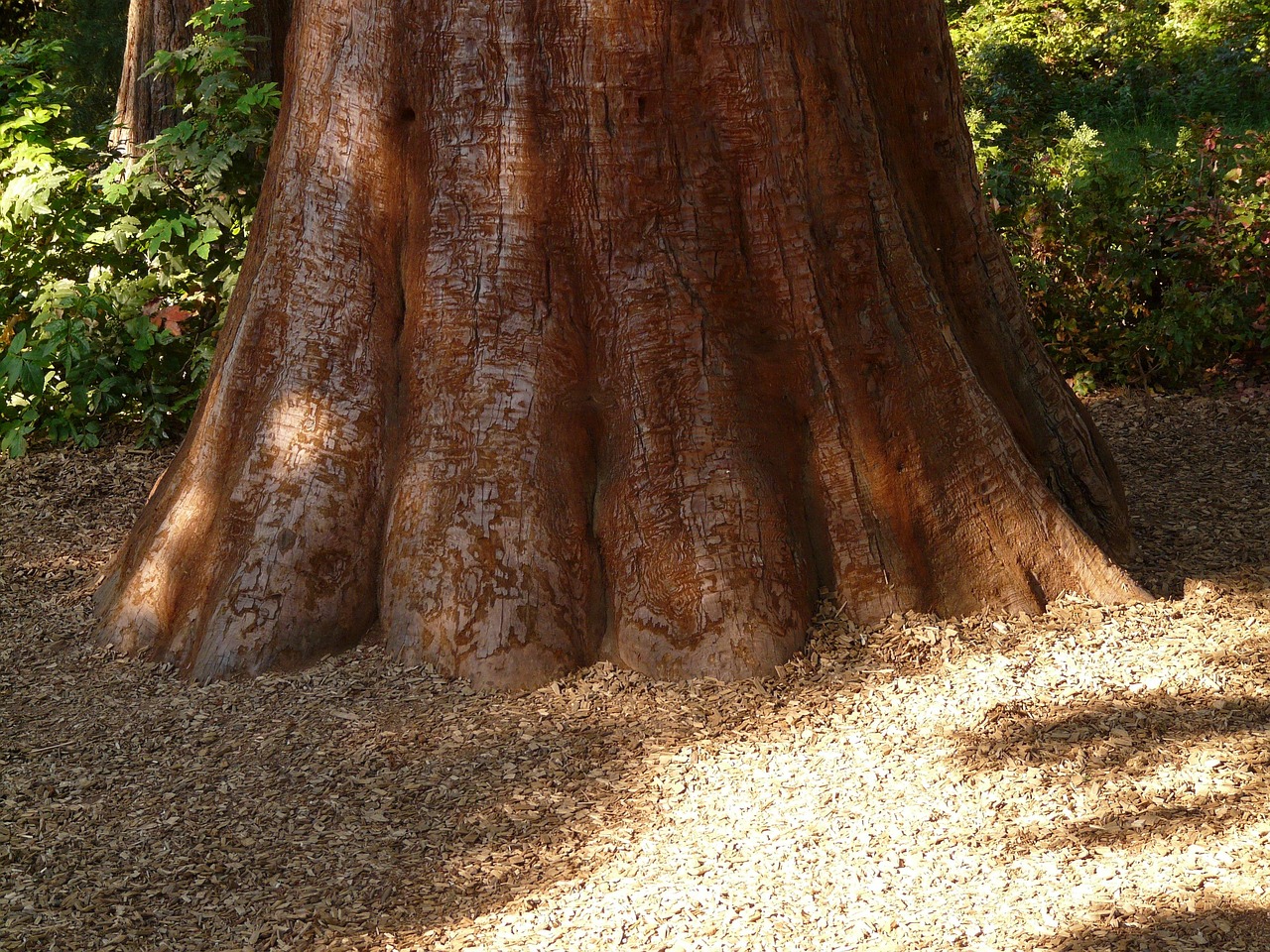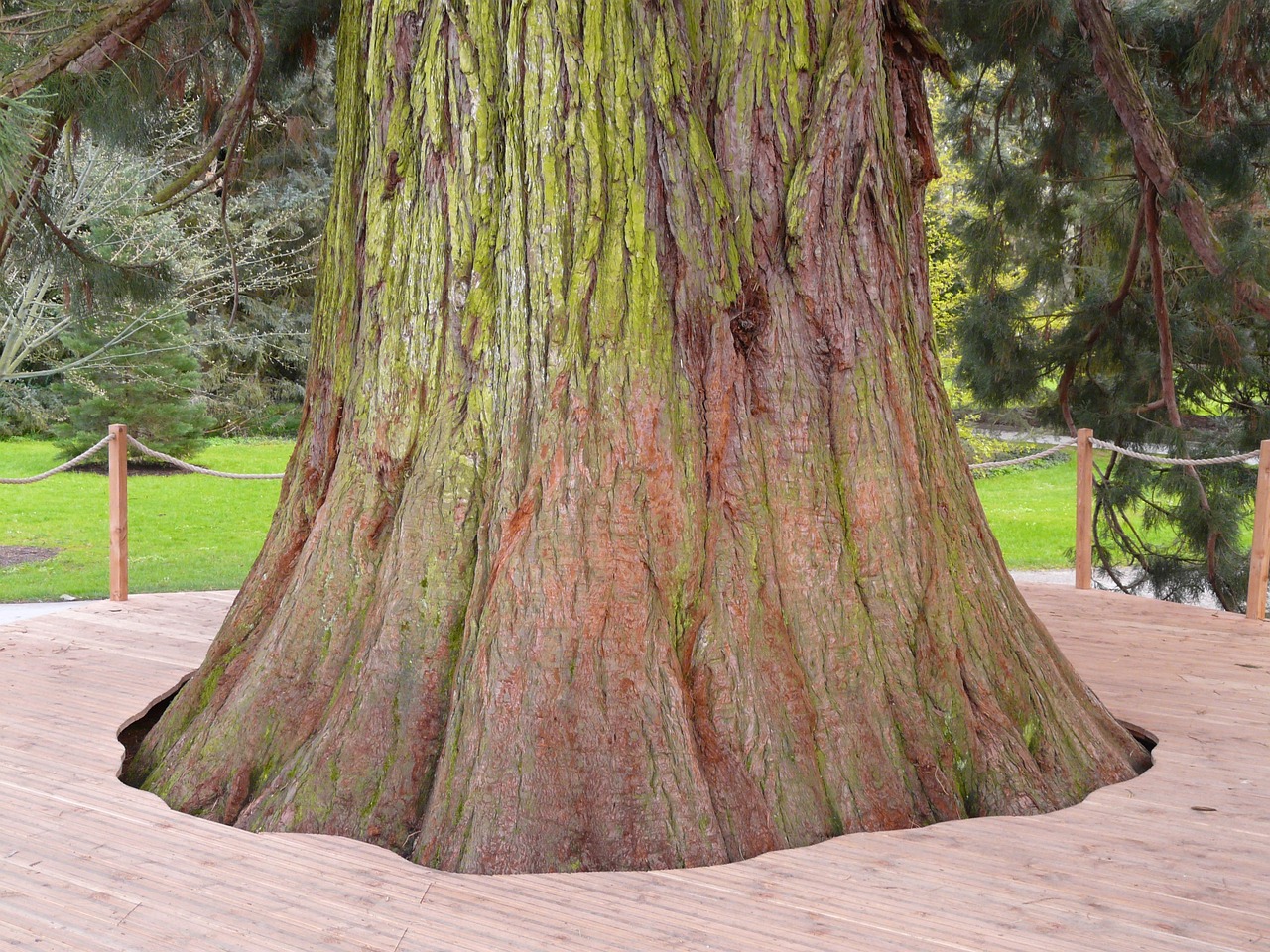Tree diameter growth per year varies significantly among species, influenced by factors such as age, environment, and genetics. Generally, fast-growing species like willows can increase in diameter by more than 1 inch per year, while slower-growing species like oaks may only grow by 0.2 to 0.5 inches annually.
Understanding tree diameter growth is essential for various fields, including forestry, ecology, and urban planning. It helps in assessing tree health, predicting timber yield, and managing forest resources sustainably. The growth rate can be quantified by measuring the diameter at breast height (DBH), typically taken at 4.5 feet above ground level. This measurement provides a standard way to gauge the growth of different tree species over time.

Several factors influence the rate of diameter growth in trees. These factors include species type, environmental conditions, soil quality, water availability, and competition from other vegetation. For instance, trees in nutrient-rich soils and favorable climates tend to grow faster than those in poor soils or harsh climates.
Factors Influencing Tree Diameter Growth
To better understand tree diameter growth, it is important to consider the following key factors:
- Species Type: Different species have inherent growth rates. Fast-growing species often have shorter lifespans but can quickly reach maturity.
- Soil Quality: Nutrient-rich soils promote better growth. Poor soil can limit a tree’s ability to absorb essential nutrients.
- Water Availability: Adequate water supply is critical for photosynthesis and nutrient transport.
- Climate: Temperature and precipitation patterns greatly affect growth rates. Trees in temperate climates often grow faster than those in arid regions.
- Competition: Trees that compete for sunlight and nutrients may grow slower if they are overshadowed by larger plants.
The impact of these factors can vary widely across different tree species. To illustrate this variability, the following table provides an overview of the average annual diameter growth for selected tree species:

| Tree Species | Average Diameter Growth (inches per year) | Growth Rate Classification |
|---|---|---|
| Willow | 1.0 – 1.5 | Fast-growing |
| Pine | 0.5 – 1.0 | Moderate-growing |
| Oak | 0.2 – 0.5 | Slow-growing |
| Maple | 0.5 – 1.0 | Moderate-growing |
| Cypress | 0.3 – 0.8 | Moderate-growing |
This table highlights the differences in growth rates among several common tree species. For example, willows are known for their rapid growth, making them popular choices for landscaping and erosion control. In contrast, oaks, while slower to grow, are valued for their longevity and strength.
The age of a tree also plays a vital role in its growth rate. Young trees often exhibit rapid growth as they establish their root systems and foliage. As trees mature, their growth tends to slow down. Understanding these dynamics is crucial for effective forest management and conservation practices.
In addition to natural factors, human activities can significantly impact tree growth rates. Practices such as selective logging, reforestation efforts, and urban development can alter the surrounding ecosystem, affecting growth patterns. Sustainable management practices aim to mitigate these impacts while promoting healthy forest ecosystems.

This comprehensive understanding of tree diameter growth is essential for anyone involved in forestry or environmental sciences. It aids in making informed decisions that balance ecological health with economic benefits.
Measurement Techniques for Tree Diameter Growth
Accurate measurement of tree diameter growth is crucial for monitoring health and sustainability. Various methods exist to measure the diameter of trees, each with its own advantages and limitations. Understanding these techniques helps foresters and researchers select the best approach for their needs.
Standard Measurement Methods
The most common method for measuring tree diameter is the Diameter at Breast Height (DBH). This method involves measuring the circumference of the tree at 4.5 feet above ground level. The following steps outline the DBH measurement process:
- Identify the correct height for measurement (4.5 feet).
- Use a measuring tape to find the circumference around the tree trunk.
- Convert the circumference to diameter using the formula: Diameter = Circumference / π (approximately 3.14).
This method provides a consistent measure that aids in comparing growth rates across different species and locations.

Advanced Measurement Techniques
In addition to DBH, there are several advanced techniques that researchers use to measure tree diameter growth more accurately:
- Increment Boring: This technique involves using a specialized tool to extract a core sample from the tree. This allows researchers to analyze growth rings without damaging the tree significantly.
- Laser Scanning: High-tech laser devices can measure tree dimensions precisely without physical contact. This method is particularly useful in dense forests where traditional measurements are difficult.
- 3D Imaging: Advanced imaging technology can create three-dimensional models of trees, providing detailed information about growth patterns and volume without invasive procedures.
Each of these methods has its own set of benefits, and the choice often depends on the specific goals of the research and the environment in which the trees are located.
Growth Rates by Tree Species
Different species of trees exhibit varying growth rates due to genetic, ecological, and environmental factors. Below is a table summarizing the average growth rates for several common tree species.
| Tree Species | Average Diameter Growth (inches per year) | Growth Characteristics |
|---|---|---|
| Red Maple | 0.5 – 1.0 | Moderate growth; adaptable to many soil types. |
| Bald Cypress | 0.5 – 1.2 | Tolerant of wet conditions; grows well in swamps. |
| Sugar Maple | 0.3 – 0.7 | Slow to moderate growth; prefers well-drained soil. |
| Loblolly Pine | 1.0 – 2.0 | Fast-growing; commonly used in commercial forestry. |
| White Oak | 0.2 – 0.5 | Slow growth; known for its strength and durability. |
This table highlights how species such as Loblolly Pine exhibit significantly faster growth compared to others like White Oak. Understanding these differences is essential for selecting appropriate species for reforestation or landscaping projects.
Environmental Influences on Growth Rates
The environment plays a crucial role in determining how quickly trees grow in diameter. Several environmental factors can enhance or hinder growth rates:
- Sunlight: Trees require adequate sunlight for photosynthesis. Insufficient light can slow growth significantly.
- Nutrients: Soil fertility directly affects a tree’s ability to grow. Nutrient-rich soils support faster growth rates.
- Water Availability: Consistent access to water is vital for maintaining healthy growth. Drought conditions can severely stunt development.
- Pests and Diseases: Infestations and diseases can damage trees, reducing their growth potential.
By understanding these environmental influences, forest managers can create conditions that promote healthy growth and sustainability in various tree species.
The Role of Genetics in Growth Rates
Genetic factors are also significant in determining how fast trees grow in diameter. Different cultivars within the same species may exhibit distinct growth characteristics due to selective breeding practices:
- Selectively Bred Varieties: Some species have been selectively bred for faster growth rates or better disease resistance.
- Natural Genetic Variation: Even within a single species, genetic diversity can lead to differences in growth potential among individual trees.
This genetic aspect underscores the importance of considering both environmental conditions and inherent biological traits when studying tree growth dynamics.
Impact of Climate Change on Tree Diameter Growth
Climate change poses significant challenges to tree growth, affecting not only the average diameter growth but also the overall health of forest ecosystems. As temperatures rise and precipitation patterns change, trees may respond in various ways that can alter their growth dynamics.
Temperature Effects
Rising temperatures can have both positive and negative effects on tree growth:
- Extended Growing Seasons: Warmer temperatures can lead to longer growing seasons, allowing some species to increase their diameter growth.
- Heat Stress: Conversely, extreme heat can lead to water stress, which may hinder growth and even cause tree mortality.
Different species respond uniquely to temperature changes. For example, species adapted to cooler climates may struggle as temperatures rise, while others may thrive in warmer conditions.
Precipitation Changes
Changes in precipitation also significantly impact tree growth rates:
- Increased Rainfall: Some species may benefit from increased moisture availability, leading to enhanced growth rates. However, excessive rainfall can lead to waterlogging and root rot.
- Drought Conditions: Prolonged periods of drought can severely limit growth potential. Trees may exhibit reduced diameter growth due to insufficient water for photosynthesis.
Understanding these effects is crucial for predicting how tree species will fare in a changing climate and for developing appropriate management strategies.
Tree Growth and Carbon Sequestration
Trees play an essential role in carbon sequestration, capturing carbon dioxide from the atmosphere and storing it as biomass. As trees grow in diameter, they contribute significantly to this process.
The Relationship Between Growth Rates and Carbon Storage
The rate at which a tree grows in diameter directly influences its capacity to sequester carbon. Faster-growing species tend to capture more carbon over their lifetimes. Key factors include:
- Growth Rate: Species such as Poplar and Eucalyptus are known for their rapid growth, making them more effective in carbon sequestration compared to slower-growing species like Oak or Pine.
- Age of Trees: Young trees grow faster and absorb more carbon than older trees, which may have reached their maximum growth potential.
Estimating Carbon Sequestration
Estimating the amount of carbon sequestered by a tree can be done using allometric equations that relate tree diameter to biomass. These equations help calculate the total carbon storage potential of different species based on their growth rates. The general formula for estimating biomass from DBH is as follows:
Biomass (kg) = 0.1 × (DBH^2.5)
This equation aids researchers and forest managers in understanding the carbon storage capabilities of various tree species, thereby informing conservation efforts.
Management Practices for Enhancing Growth
To maximize tree diameter growth and ensure healthy forest ecosystems, specific management practices can be implemented. These practices include:
- Thinning: Reducing competition among trees can promote individual growth rates by allowing more sunlight and nutrients to reach each tree.
- Fertilization: Applying fertilizers can enhance soil nutrient levels, supporting better growth in nutrient-deficient areas.
- Irrigation: In arid regions, supplemental watering may be necessary during dry spells to maintain optimal growth conditions.
- Pest Control: Regular monitoring and management of pests can prevent damage that would otherwise limit growth potential.
By implementing these practices, forest managers can create environments conducive to healthy growth rates across various tree species, ensuring sustainable forestry practices and enhanced ecosystem health.
The Economic Importance of Tree Diameter Growth
The economic implications of tree diameter growth are significant, particularly in the timber industry. Understanding the growth patterns of various species helps inform sustainable harvesting practices and economic planning.
Timber Production
Faster-growing species are often favored in commercial timber production due to their quicker returns on investment. Key considerations include:
- Market Demand: Species like Pine and Eucalyptus are often in demand for construction and paper products due to their rapid growth rates.
- Sustainable Practices: Balancing the need for timber with environmental sustainability is crucial. Responsible management ensures that forests can continue to provide resources without degrading ecosystems.
Reforestation and Ecosystem Services
Tree diameter growth is also vital for reforestation efforts aimed at restoring ecosystems. Healthy trees provide numerous ecosystem services, including:
- Aesthetic Value: Well-managed forests enhance landscape beauty, attracting tourism and recreational opportunities.
- Biodiversity Support: Diverse tree species support a wide range of wildlife habitats.
- Erosion Control: Established root systems help prevent soil erosion, maintaining land integrity.
The economic benefits derived from these services further underscore the importance of understanding tree diameter growth as it relates to sustainable forest management practices.
Future Trends in Tree Growth Research
As we move further into the 21st century, understanding tree diameter growth becomes increasingly important in the context of climate change and sustainable forestry. Ongoing research is essential for developing new methods and technologies to monitor tree growth accurately. Here are some key trends shaping future research in this area:
- Remote Sensing Technologies: Advances in satellite imagery and drone technology are allowing researchers to gather data on tree growth over large areas without disturbing the ecosystem. This technology can provide real-time insights into forest health and growth rates.
- Genetic Research: Continued exploration into the genetics of tree species can enhance our understanding of growth patterns and resilience to climate change. Genomic studies may lead to the development of improved tree varieties that thrive in changing conditions.
- Data Analytics: The integration of big data and machine learning is revolutionizing how we analyze growth patterns. Predictive models can help forecast how different species will respond to environmental changes, allowing for more informed management decisions.
These advancements will not only enhance our understanding of tree growth but also contribute to more effective conservation strategies and sustainable forest management practices.
Community Engagement and Education
Engaging communities in tree planting and conservation efforts is vital for promoting awareness about the importance of trees and their growth. Educational programs can help individuals understand how tree diameter growth impacts ecosystems and local economies. Some effective strategies include:
- Workshops and Seminars: Hosting educational events can inform community members about the importance of various tree species and their growth rates, as well as the benefits of sustainable forestry practices.
- Tree Planting Initiatives: Involving local communities in tree planting campaigns fosters a sense of ownership and responsibility towards forests. These initiatives can help improve local biodiversity while enhancing public spaces.
- Collaboration with Schools: Educational programs in schools can introduce students to the significance of trees, emphasizing their role in carbon sequestration, biodiversity, and overall ecosystem health.
By fostering community involvement, we can create a collective effort towards protecting and enhancing our forests, ensuring future generations benefit from healthy ecosystems.
Final Thoughts
In summary, understanding tree diameter growth per year across various species is essential for sustainable forestry and environmental conservation. Factors such as genetics, climate change, soil quality, and management practices play significant roles in determining growth rates. The economic implications of these growth patterns further emphasize the need for careful planning and management.
With ongoing research, technological advancements, and community engagement, we are better equipped to address the challenges posed by climate change while ensuring that forests continue to thrive. By prioritizing sustainable practices, we can balance economic needs with ecological health, paving the way for resilient forest ecosystems that benefit both people and the planet.
The knowledge gained from studying tree diameter growth can serve as a foundation for informed decision-making in forestry management, conservation efforts, and urban planning. As we move forward, embracing this understanding will be crucial for fostering sustainable relationships with our natural environment.
